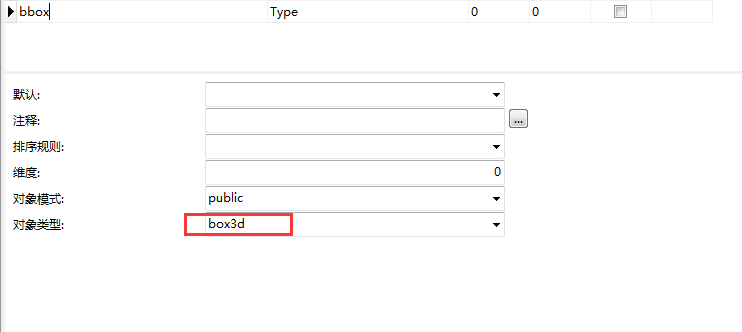geotools 实例
目录
通过FactoryFinder创建实例
1. 通过FactoryFinder在文件中找到Factory的链接(.getFactory)
2. 通过Factory创建实例对象(Feature,Filters……)
3. 对实例对象进行操作
打开shapefile文件(Quickstart)
public class Quickstart {
/**
* GeoTools Quickstart demo application.Prompts the user for a shapefile and displays its
* contents on the screen in a map frame
*/
public static void main(String[] args) throws Exception {
// display adata store file chooser dialog for shapefiles
File file =JFileDataStoreChooser.showOpenFile(“shp”, null);
if (file == null) {
return;
}
FileDataStore store =FileDataStoreFinder.getDataStore(file);
SimpleFeatureSource featureSource = store.getFeatureSource();
// Create amap content and add our shapefile to it
MapContent map = new MapContent();
map.setTitle(“Quickstart”);
Style style = SLD.createSimpleStyle(featureSource.getSchema());
Layer layer = new FeatureLayer(featureSource, style);
map.addLayer(layer);
// Now displaythe map
JMapFrame.showMap(map);
}
}
1. 通过JFileDataStoreChooseer打开文件(特定后缀名)–出现打开文件对话框
——gt-swing.jar
2. 通过StoreFinder获取DataStore
3. 在DataStore获取SimpleFeatureSource
4. 新建FeatureLayer,参数需要featureSource/collection,style
5. 新建MapContent地图容器
6. 加载图层
7. 显示地图
将CVS文件转为shapefile文件并导出
思路:(打开cvs文件,)定义新shp文件类型,读取cvs文件数据生成要素(个体),再将要素存到数据集;创建新shp文件,将其指定为工作工厂,将数据集中数据写入。
用到的jar包(gt-shapefile,gt-epsg-hsql,gt-swing)
不能直接把所以jar包导入,会报错(org.opengis.referencing.FactoryExceptoin:Fail to connect to the EPSGdatabase)。
另外的可能解决办法:用Maven新建项目(jar包将自己检查和精简),需要在pom.xml中设置需要依赖的jar包名称等。
1. 通过JFileDataStoreChooseer打开文件(特定后缀名)–出现打开文件对话框
——gt-swing.jar
“the_geom:Point:srid=4326,”+ // <- the geometry attribute: Point type,SRID=4326表示坐标系为WGS84。ogc标准中空间参照系统的SRid(Spatial Reference System identifier)与EPSG的空间参照系统id相一致。4326为WGS84的WKID。
2. 通过DataUtilities类创建shp文件的类型以及所包含字段
——gt-main.jar
DataUtilities.createType(typeName, specification )
featureType一旦被创建便无法修改,只能通过复制获得一个subType
点要素的类型名称为location
另外一种创建tpye的方式:SimpleFeatureTypeBuilder
优点:
可定义坐标系、定义字段长度
/**
* Here is how you can use a SimpleFeatureType builder to create the schema for your shapefile
* dynamically.
* <p>
* This method is an improvement on the code used in the main method above (where we used
* DataUtilities.createFeatureType) because we can set a Coordinate Reference System for the
* FeatureType and a a maximum field length for the 'name' field dddd
*/
private static SimpleFeatureType createFeatureType() {
SimpleFeatureTypeBuilder builder = new SimpleFeatureTypeBuilder();
builder.setName("Location");
builder.setCRS(DefaultGeographicCRS.WGS84); // <- Coordinate reference system
// add attributes in order
builder.add("the_geom", Point.class);
builder.length(15).add("Name", String.class); // <- 15 chars width for name field
builder.add("number",Integer.class);
// build the type
final SimpleFeatureType LOCATION = builder.buildFeatureType();
return LOCATION;
}
3. 读取csv文件中每行的信息,通过geometryFactory(通过JTSFactoryFinder获得)生成几何图形(.createpoint),并通过featureBuilder添加要素的属性新建(.add)最后创建要素。
4. 创建shapefile文件,并获得生成的shp文件(路径)[A1]
5. 通过dataStoreFactory创建ShapefileDataStore(需要新建的shp文件的空间索引,通过Map<String, Serializable>获得空间索引),并定义其类型。
6. 获得featuresource再将其赋值到featurestore(featuresource只读文件,featurestore提供读写功能)
7. 通过SimpleFeatureCollection获得所有要素
8. 通过Transaction(修改数据的接口,作用于featurestore)将数据写入shapefile
生成缓冲区
用Geometry中Buffer的方法
public Geometry buffer(double distance),和arcgis 中设置的一样(arcgis中distance单位选择unkonw—使用输入要素空间参考的线性单位)。
(在jts-javadoc中可以找到)
如:
//缓冲区
Polygon polygon =(Polygon) point.buffer(10);
按照生成shp文件的方法,生成Polygon类型的。
几何坐标参考系
Caused by: org.geotools.factory.FactoryNotFoundException: No factory of kind”CRSAuthorityFactory” found.
要素属性检索
1. 主窗体设计JFrame
注意:
[1]窗体关闭时的响应动作,setDefaultCloseOperation
[2]对窗体添加组件需用到getContentPane()
[3]调整此窗口的大小,以适合其子组件的首选大小和布局。pack();
[4]菜单栏分割线。fileMenu.addSeparator();
[5]JTable需要设置model,通过tablemodel对数据进行操作。
[6]对按钮添加点击事件的方法:如:
fileMenu.add(new SafeAction(“Open shapefile…”) {
public void action(ActionEvent e) throws Throwable {
connect(new ShapefileDataStoreFactory());
}
});
实例中包含:文本输入框、表格(含滚动条)、选择菜单、下拉选择列表
2. 连接数据源,使用DataStoreFactorySpi用于创建数据源仓库
3. JDataStoreWizard用于打开向导(根据不同DataStore的类型而不同)。适用于 shapefile 或 PostGIS 数据库对话框。需要传入DataStoreFactorySpi参数。
4. 通过JDataStoreWizard获得连接参数,返回值为Map<String, Object>,用于获得datastore。
dataStore =DataStoreFinder.getDataStore(connectionParameters);
5. 对属性表进行筛选
Typename->datastore->getfeaturesource
通过CQL检索语言获得Filter
-à SimpleFeatureCollection features =source.getFeatures(filter);
通过FeatureCollectionTableModel将检索到的SimpleFeatureCollection加进去,
最后可以通过setmodel方法将数据加到jtable中。
6. 统计要素个数
SimpleFeatureCollection.size();
7. 只获取筛选出来的数据的某些属性字段(Query和Filter的区别)
[1]获取字段名(不能直接输入会报错)
通过FeatureType获取。
FeatureTypeschema = source.getSchema();
A. 获取几何属性字段名
schema.getGeometryDescriptor().getLocalName();
B. 获取属性字段名
schema.getDescriptors()—获得所有字段名的集合
遍历写法
for(PropertyDescriptor pro:schema.getDescriptors()){
// PropertyDescriptor是schema.getDescriptors()的其中一个对象,可采用这种方式进行遍历
if(pro.getName().toString().equals(“the_geom”)){continue;}
name=pro.getName().toString();//需要将类型转为string
break;
}
[2]Query筛选函数:Query query = newQuery(typeName, filter, new String[] {geometryAttributeName,name});
[3]SimpleFeatureCollection features =source.getFeatures(query);
8. 查询语句:
如:
CNTRY_NAME = ‘France’
POP_RANK >= 5
BBOX(the_geom, 110, -45, 155, -10)// 选择所有功能区内北临 110-155 °W,10-45 °S (在澳大利亚附近的松散框) 的边界框查询。
9. 构造弹窗,提供可选的属性字段
[1]定义模态对话框(JDialog),传入参数为:父窗体、featureType
[2]新建属性字段字符串数组:properties = new String[size];
[3]新建container容器,JPanel
[4]需要用到的组件:JCheckBox,JButton
[5]遍历所有属性字段名,PropertyDescriptor pro : schema.getDescriptors()
获取所有被选中属性字段的字段名称:
int j = 0;
for(Component c : checkPanel.getComponents()) {
if (c instanceof JCheckBox) {
if (((JCheckBox) c).isSelected()&& j < size)// 是否被选中
{
properties[j]= ((JCheckBox) c).getText();
j++;
}
}
}
[6]销毁窗体,释放部分内存。Dispose();
10.
设置样式
直接使用设置样式对话框
SimpleFeatureType schema =(SimpleFeatureType)featureSource.getSchema();
//会根据不同的几何图形而不同
returnJSimpleStyleDialog.showDialog(null, schema);//返回值为style
打开SLD文件配置
1. 新建sld解析
SLDParser tylereader = new SLDParser(styleFactory, sld);
2. 解析读取样式
Style[] style =stylereader.readXML();
3. 取tyle[0]
自定义样式
1. 创建symbolizer(通过stylefactory.create…)
[1] LineSymbolizer
方法:StyleFactory.createLineSymbolizercreateLineSymbolizer(Strokestroke[A2] , StringgeometryPropertyName)
a) 创建stroke的方法(三种):
1) createStroke(Expression[A3] color,Expression width),颜色、宽度
2) createStroke(Expression color, Expressionwidth, Expression opacity),颜色、宽度、不透明度
3) createStroke(Expression color, Expressionwidth, Expression opacity, Expression lineJoin, Expression lineCap, float[]dashArray, Expression dashOffset, Graphic graphicFill, Graphic graphicStroke)
i. lineJoin
设置线条转角样式(mitre(斜接面)(默认值)、bevel(斜面)[A4] 、round(圆形))
ii. lineCap
设置线条端点形状(butt、square[A5] 、round)
iii. dashArray
轮廓的虚线的间隔样式({4,6}、{10.10})
iv. dashOffset
设定虚线时虚实间隔中的其实的
v. graphicFill
设置填充图案,图案平铺填充;若为null,则以颜色填充
vi. graphicStroke
用样式点划线,会忽略线的宽度。StyleFactory.graphicStroke(……)
graphicStroke(
List<GraphicalSymbol>symbols,//只能加入一个symbol,加入新的样式前线graphic.graphicalSymbols().clear();,List<GraphicalSymbol> symbols=graphic.graphicalSymbols();
Expression opacity,
Expression size,
Expression rotation,//旋转角度(顺时针)
AnchorPoint anchorPoint,//旋转中心
Displacement displacement,//多用于呈现一个点附近的文本样签,默认(0,0),styleFactory.createDisplacement
Expression initialGap,//第一个图像相对于开始的距离
Expression gap)//两个graphic之间的距离
b)
[2] PolygonSymbolizer
StyleFactory.createPolygonSymbolizer(Strokestroke, Fill fill, String geometryPropertyName)
a) styleFactory.createStroke
b) styleFactory.createFill
[3] PointSymbolizer
createPointSymbolizer(Graphicgraphic, String geometryPropertyName)
a) 创建mark(通过styleFactory.get___Mark())
i. Mark.setStroke//轮廓线样式
ii. Mark.setfill//填充
iii. Mark.setWellKonwName(string[A6] )//会覆盖i设置的样式
iv. Mark. setExternalMark(arg0)//加载png,svg作填充
b) 创建graphic
Graphic graphic= sf.createDefaultGraphic();
c) 将mark加进graphic中
graphic.graphicalSymbols().clear();
graphic.graphicalSymbols().add(mark_end);
2. 创建rule(通过stylefactory.createrule())
3. 将symbolizer加进rule中(rule.add(symbolizer))
a) 对同一几何要素的不同特征设置样式(如画箭头线)
i. 新建FilterFunction_endPoint
ii. 得到数据的几何类型,加如list<expression>
Expression attribute =ff.property(schema.getGeometryDescriptor().getName());
List<Expression> params=new ArrayList<Expression>();
params.add(attribute);
iii. 设置检索终点的作用对象
endPoint.setParameters(params);
iv. 设置样式的作用几何对象
end_psym.setGeometry(endPoint);
v. 将symbol添加到rule中
rule.symbolizers().add(end_psym);
b)
4. 创建FeatureTypeStyle,传入rule做参数。
FeatureTypeStylefts = sf.createFeatureTypeStyle(new Rule[]{rule});
a) 对不同要素赋予不同样式(进行筛选)
RuleselectedRule = createRule(SELECTED_COLOUR, SELECTED_COLOUR);
selectedRule.setFilter(ff.id(IDs));
Rule otherRule =createRule(LINE_COLOUR, FILL_COLOUR);
otherRule.setElseFilter(true);
FeatureTypeStyle fts =sf.createFeatureTypeStyle();
fts.rules().add(selectedRule);
fts.rules().add(otherRule);
5. 创建style
Style style =sf.createStyle();
6. 将刚刚新建的FeatureTypeStyle加到style中,style.featureTypeStyles().add(fts);
FilterFactory.literal(……)
这个接口的实例提供一个常数,返回值为literal可以用在表达式的值。
传入参数:
|
Boolean |
Byte |
Char |
Double |
Float |
Int |
Long |
Object |
Short |
|
|
|
|
|
|
|
|
Color, String…… |
|
建立sld样式文件
1. 使用udig新建设置样式后保存即可。
不同的FactoryFinder接口所对应能找到的工厂类型
CommonFactoryFinder
- FilterFactory
- StyleFactory
- Function
- FeatureLockFactory
- FileDataStore – factory used to work with file datastores
- FeatureFactory – factory used to create features
- FeatureTypeFactory – factory used to create feature type description
- FeatureCollections – factory used to create feature collection
对应于矢量要素(Feature)的FactoryFinder
- DataAccessFinder – listing DataAccessFactory for working with feature data
- DataStoreFinder – lists DataStoreFactorySpi limited to simple features
- FileDataStoreFinder – Create of FileDataStoreFactorySpi instances limited to file formats
对应于栅格(Coverage)的FactoryFinder
- GridFormatFinder – access to GridFormatFactorySpi supporting raster formats
- CoverageFactoryFinder – access to GridCoverageFactory
JTSFactoryFinder
- GeometryFactory
- PrecisionModel
ReferencingFactoryFinder
- DatumFactory
- CSFactory
- DatumAuthorityFactory
- CSAuthorityFactory
- CRSAuthorityFactory
- MathTransformFactory
- CoordinateOperationFactory
- CoordinateOperationAuthorityFactory
遍历对象:FeatureIterator和FeatureVisitor异同
|
FeatureIterator |
FeatureVisitor |
|
使用完毕需要调用.close() |
多用于计算,数据转换 |
|
不适用于大数据量GIS |
|
|
所含方法: .hasnext(); .next(); .close(); |
所含方法: .visitor(); |
转载自:https://blog.csdn.net/admin_fx/article/details/81566124




